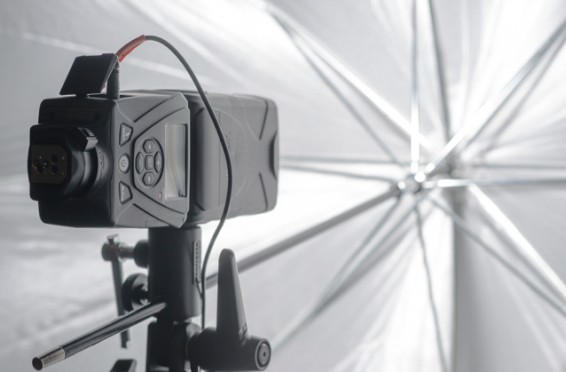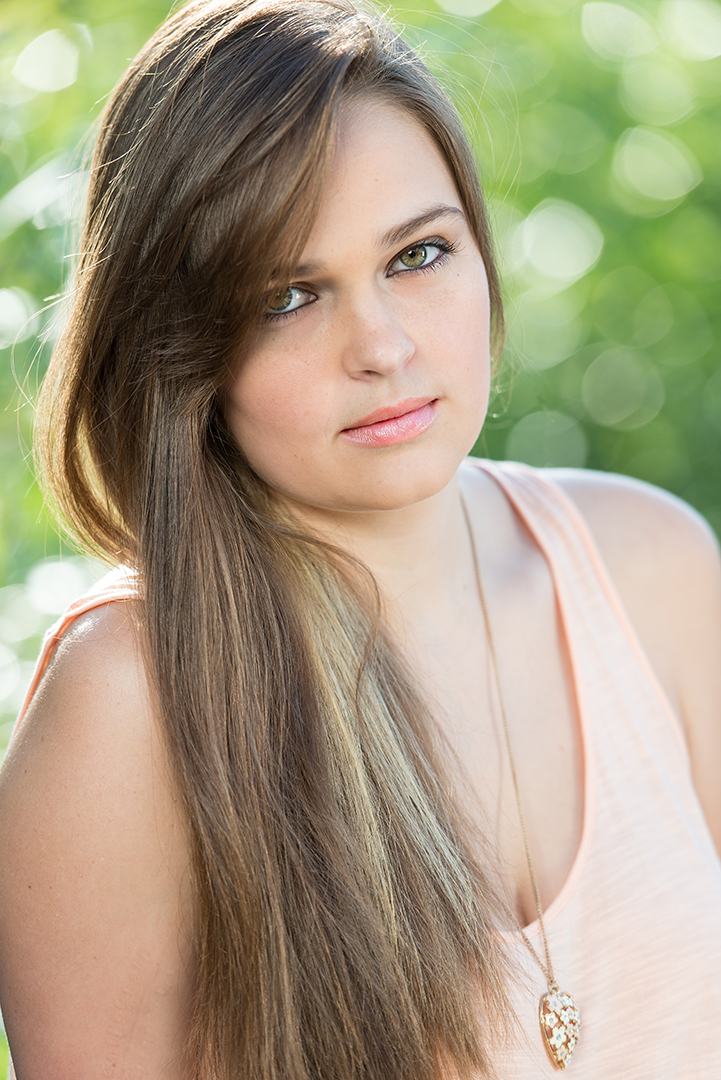I wonder who first coined the statement; “Hindsight is 20/20?” Of course, looking back we can always see how we would do things differently if we were able to do them over again. And this is great because we can learn from others that have already experienced the pains and frustration of learning something new. It can be a daunting task if we didn’t have others from whom we can learn. Therefore, I would like to share what I would do differently if I were just starting out learning how to use off-camera flash.
First, we need to understand what is off-camera flash and why is it important in photography. We have all seen photographers with a separate flash attached to the top of their camera and many cameras of course have the “pop-up” flash on top of the camera. This type of frontal lighting position creates a very flat light to our pictures that has very little shadows to help us discern a shape. We, as photographers, are fighting a war trying to portray depth and shape in a two dimensional media. Learning to use off-camera flash is a way of adding “shadows” or “light” to photographs that helps us to define three dimensional shapes in the two dimensional images and helps create drama.
First, we need to understand what is off-camera flash and why is it important in photography. We have all seen photographers with a separate flash attached to the top of their camera and many cameras of course have the “pop-up” flash on top of the camera. This type of frontal lighting position creates a very flat light to our pictures that has very little shadows to help us discern a shape. We, as photographers, are fighting a war trying to portray depth and shape in a two dimensional media. Learning to use off-camera flash is a way of adding “shadows” or “light” to photographs that helps us to define three dimensional shapes in the two dimensional images and helps create drama.
Moving forward, when I first decided that I wanted to learn off-camera flash, I did what many of us do. I went to YouTube to see if there were any videos on the topic. Of course there are a ton of videos out there! Part of the problem is that many of them are there to promote products that are going to “take your pictures to the next level.” I suppose some are very much capable of helping to define a style or a different look. I tried a number of these products without much success.
What’s not being prevalently stated out there is what is it you need to start learning off-camera flash. I ended up with a lot of “products” I just didn’t need or, quite frankly, never use even today. I purchased these products before I really understood what I what need. If I could start over, here is a list of what I think you would want to acquire first (assuming you already have a camera and a lens):
* Education
* Flash
* 45” Convertible Umbrella
* Light stand
* Umbrella bracket
* Foam Wig Head (Yes that’s right - you read that correctly)
* Radio triggers (optional depending on your camera’s ability)
What’s not being prevalently stated out there is what is it you need to start learning off-camera flash. I ended up with a lot of “products” I just didn’t need or, quite frankly, never use even today. I purchased these products before I really understood what I what need. If I could start over, here is a list of what I think you would want to acquire first (assuming you already have a camera and a lens):
* Education
* Flash
* 45” Convertible Umbrella
* Light stand
* Umbrella bracket
* Foam Wig Head (Yes that’s right - you read that correctly)
* Radio triggers (optional depending on your camera’s ability)
Education: I don’t know about you but I am a very visual learner. I really benefit from watching someone do something and then trying it out myself. One of the great things about The Right Light Photography
or Localphotographyclasses.com
is that they offer several different classes on lighting topics that are sure to give you what you need to get started. This is where I have learned the basics of lighting – even how to become a professional photographer. I searched for local classes on the internet and I was impressed by the number of classes offered by Localphotographyclasses.com
and the reviews from the previous students.
Flash: This will be one of your biggest expenses. The cool thing about this is, for off-camera flash you can use just about any make or model with your camera if you are using radio triggers. Yep, own a Canon camera and someone gave you a Nikon flash – you can make it work! Now for those who are just starting out, you may want to stick with your camera’s make and model as you may not have the budget for radio triggers, because many of the newer cameras have the ability to trigger their own flash models remotely via infrared signals. But if you do buy a flash be sure that the flash has some form of sync cable port (you’ll want this in the future). Knowing what I know now, I would recommend (if you have the money) a flash to go with your brand of camera, but if cost is an issue you can’t beat the LumoPro LP180. You can find information here!
Light Modifier: I suggest starting out with a convertible umbrella as your first light modifier. What is a convertible umbrella you ask? A convertible umbrella is a regular white translucent umbrella, that has a black cover over the top – so this umbrella can be used as a reflective, shoot through, poor man’s softbox, modified shoot through, etc...basically it allows for different looks and types of light all with one device. I suggest the 45” as it’s relatively inexpensive, large enough to be useful and small enough to be portable. I use the Westcott 45” Convertible Umbrella. The new models have fiberglass rods for longer life – you’ll appreciate them. Trust me. You can find more information here!
Light stand: To get the flash off-camera – you’ll need something to put the light on. There are a ton of light stands out there and some are very cheap but can serve you well. I recommend a compact light stand like the Manfrotto 5001B. It folds down to be about 18.9”, but when fully extend can be over 6 foot tall. You can find more information here!
Umbrella bracket: Here’s another place I would not skimp on the type of bracket. Buy a METAL one. Think about this, you are putting an umbrella 6 feet in the wind-riddled air. It will want to fly away and fall over. Remember those fiberglass rods I told you about? Here again, I would suggest a Manfrotto product Swivel Umbrella Adapter #026. You can find more information here!
Foam Wig Head: OK, you may think I am crazy, but you need a model to practice on. Who better than someone who won’t talk back to you? If you have another light stand, you can put the head on a stand a shoot away! You may want to put some black tape over one of the eyes to help you focus! You know what they say, “practice, practice, practice!” Visit your local beauty supply store. Yes guys ,you can go there too. They don’t bite.
Radio triggers: Ultimately you’ll want to purchase radio triggers but you can get started with your camera’s ability to infrared trigger your flash (of the same make). If you have a flash that is not compatible with your infrared capabilities, then you’ll definitely need some triggers. There are a ton of third party companies that offer low priced triggers. If you plan on continuing and using off-camera flash in your workflow, there is no better trigger to get than the Pocket Wizard Plus X. You can find more information here!
Flash: This will be one of your biggest expenses. The cool thing about this is, for off-camera flash you can use just about any make or model with your camera if you are using radio triggers. Yep, own a Canon camera and someone gave you a Nikon flash – you can make it work! Now for those who are just starting out, you may want to stick with your camera’s make and model as you may not have the budget for radio triggers, because many of the newer cameras have the ability to trigger their own flash models remotely via infrared signals. But if you do buy a flash be sure that the flash has some form of sync cable port (you’ll want this in the future). Knowing what I know now, I would recommend (if you have the money) a flash to go with your brand of camera, but if cost is an issue you can’t beat the LumoPro LP180. You can find information here!
Light Modifier: I suggest starting out with a convertible umbrella as your first light modifier. What is a convertible umbrella you ask? A convertible umbrella is a regular white translucent umbrella, that has a black cover over the top – so this umbrella can be used as a reflective, shoot through, poor man’s softbox, modified shoot through, etc...basically it allows for different looks and types of light all with one device. I suggest the 45” as it’s relatively inexpensive, large enough to be useful and small enough to be portable. I use the Westcott 45” Convertible Umbrella. The new models have fiberglass rods for longer life – you’ll appreciate them. Trust me. You can find more information here!
Light stand: To get the flash off-camera – you’ll need something to put the light on. There are a ton of light stands out there and some are very cheap but can serve you well. I recommend a compact light stand like the Manfrotto 5001B. It folds down to be about 18.9”, but when fully extend can be over 6 foot tall. You can find more information here!
Umbrella bracket: Here’s another place I would not skimp on the type of bracket. Buy a METAL one. Think about this, you are putting an umbrella 6 feet in the wind-riddled air. It will want to fly away and fall over. Remember those fiberglass rods I told you about? Here again, I would suggest a Manfrotto product Swivel Umbrella Adapter #026. You can find more information here!
Foam Wig Head: OK, you may think I am crazy, but you need a model to practice on. Who better than someone who won’t talk back to you? If you have another light stand, you can put the head on a stand a shoot away! You may want to put some black tape over one of the eyes to help you focus! You know what they say, “practice, practice, practice!” Visit your local beauty supply store. Yes guys ,you can go there too. They don’t bite.
Radio triggers: Ultimately you’ll want to purchase radio triggers but you can get started with your camera’s ability to infrared trigger your flash (of the same make). If you have a flash that is not compatible with your infrared capabilities, then you’ll definitely need some triggers. There are a ton of third party companies that offer low priced triggers. If you plan on continuing and using off-camera flash in your workflow, there is no better trigger to get than the Pocket Wizard Plus X. You can find more information here!
OK, that about wraps this blog post. I hope this information will be useful to you. I recommend you check out the Lighting classes offered here! Feel free to ask questions in the comments section below. Thanks for reading and happy shooting.





